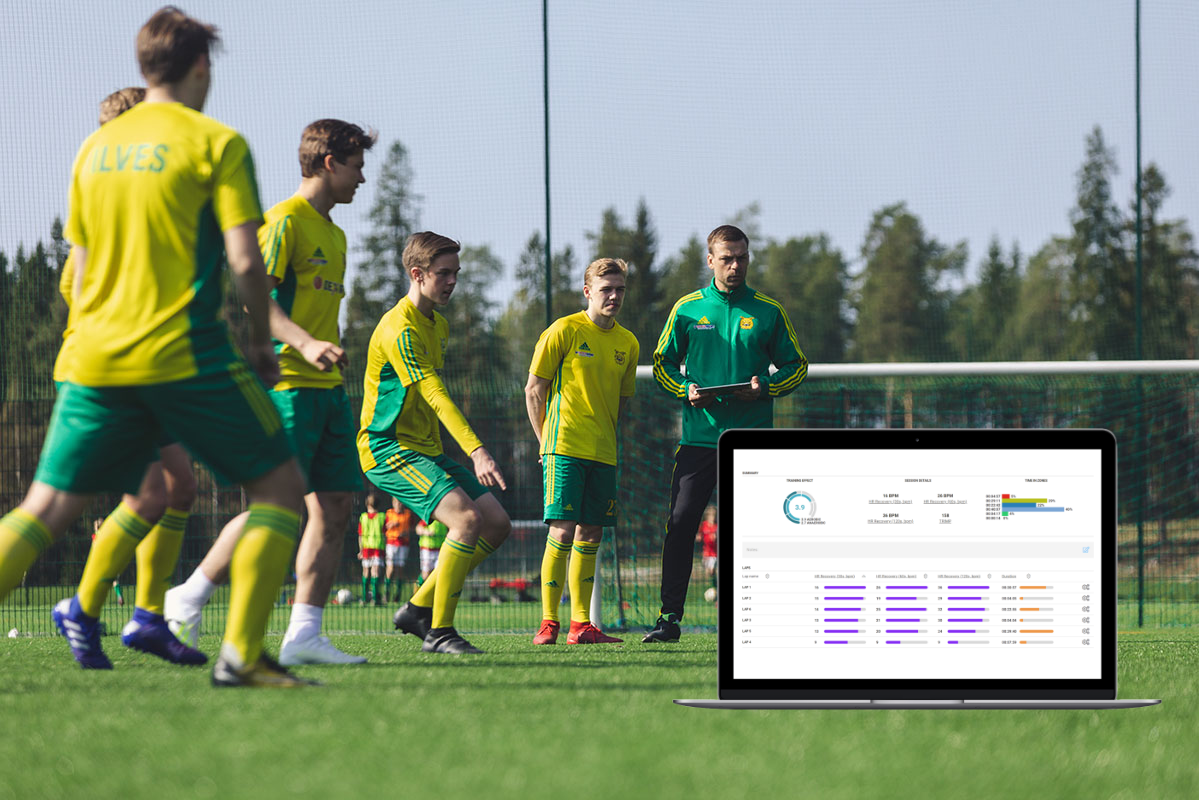
The new Heart Rate Recovery (HRR) feature from Firstbeat Sports provides an additional tool for coaches to assess the status of their athletes, giving further insights into conditioning and recovery status.
The feature itself identifies the best HRR from your specific time (e.g. a session or drill) for 30s, 60s, and 120s, and it provides both absolute (bpm) and % HRmax values, making it easy for you to track the metric from whichever period you desire. And because it automatically detects the best recovery you don’t need to be too precise in specifying where to begin the assessment from, making your job even easier and allowing you to spend more time focusing on working with your athletes.
Why is HRR Important?
It’s been shown to have good correlations with changes in performance in endurance testing (Malone, et al., 2017; Veugelers, et al., 2016), helping you keep track of athletes conditioning without having to spend valuable training time on maximal testing protocols. Instead a short Sub-Maximal Fitness Test (SMFT) can be performed in as little as 4-minutes, providing you with reliable data upon which to base your assessment of current performance levels (Scott, et al., 2022). This could easily be done as part of a warm-up each week, having minimal impact on training time or fatigue levels. It might be as simple as 8 x100m shuttles for 4 minutes, which is a steady jogging pace of 3.33m/s (12km/h), after which your athletes have a static recovery for 2 minutes (Rabbani, et al., 2018).
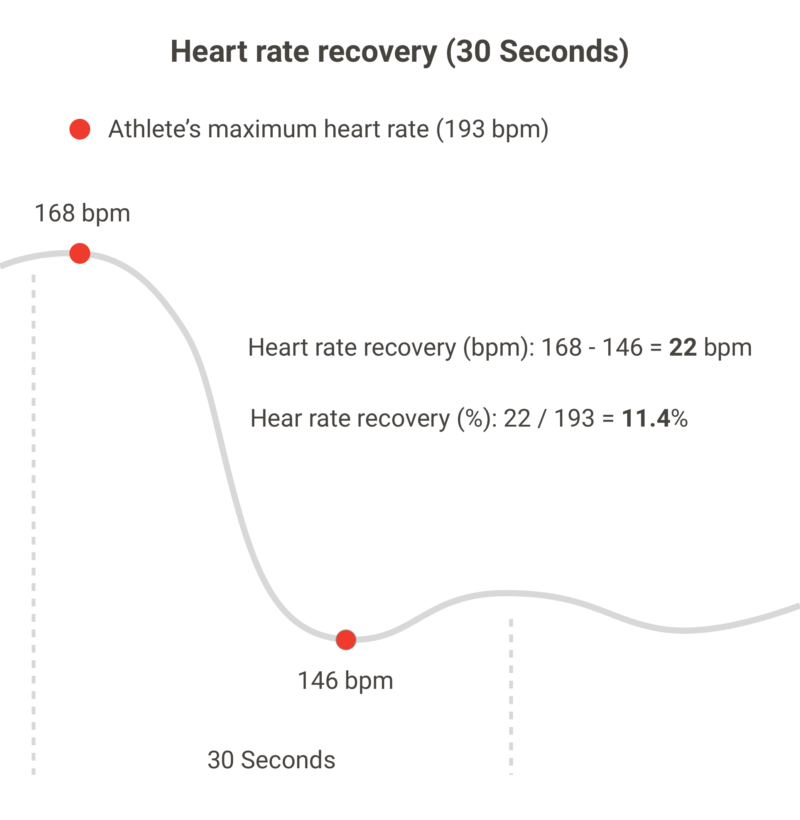
What Does the Above Look Like in Practice?
When you’ve conducted your SMFT and downloaded your data post session, create a lap/drill to capture the test itself and the 2-minutes post-test. The analysis library will automatically calculate the peak HRR from your defined drill for 30s, 60s and 120s. You could also take the HRR values for the whole session but keep in mind these might not be from straight after the SMFT, so for accurate and reliable tracking over time it’s best to define the relevant periods.
If you are able to administer your chosen SMFT at regular intervals and collect repeated measurements for an athlete, you will be able to gain insights into their cardiovascular condition. For example, Athlete A initially shows 60s HRR of 10% at the beginning of pre-season, but by the time the competitive season begins they are showing HRR of 20%. This likely means their conditioning has improved. Of course, the more regularly you can collect data the better, to help make your data more reliable and allow firmer conclusions to be formed. Regular testing helps smooth out any natural fluctuation and variation in performance.
HRR essentially reflects parasympathetic reactivation following exercise, i.e., recovery. (Bellenger, et al., 2016); an individual with greater cardiovascular fitness is able to recovery quicker than someone of lower fitness. However, while HRR reflects parasympathetic reactivation after acute exercise some caution should be exercised when trying to assess more global recovery status or readiness with it (Shushan, et al., 2022). A number of factors mean it may not reflect these aspects as well as they do performance condition, and therefore recovery/readiness is likely better assessed using a Heart Rate Variability test such as our Quick Recovery Test.
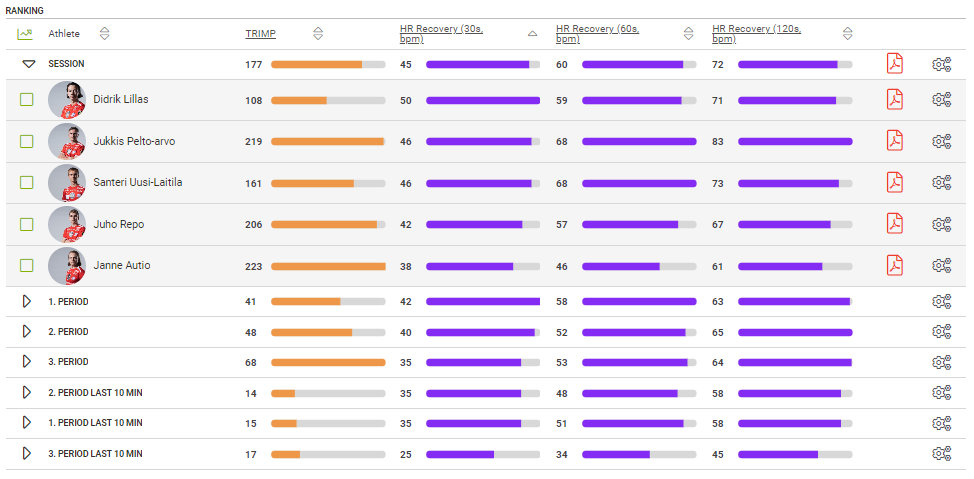
Heart Rate Recovery in Firstbeat Sports Cloud: First values are recorded for each athlete for the entire session, followed by average values for each period, and finally, averages for the last 10 minutes of each period. Additionally, it’s possible to analyze the individual data of each athlete for each period.
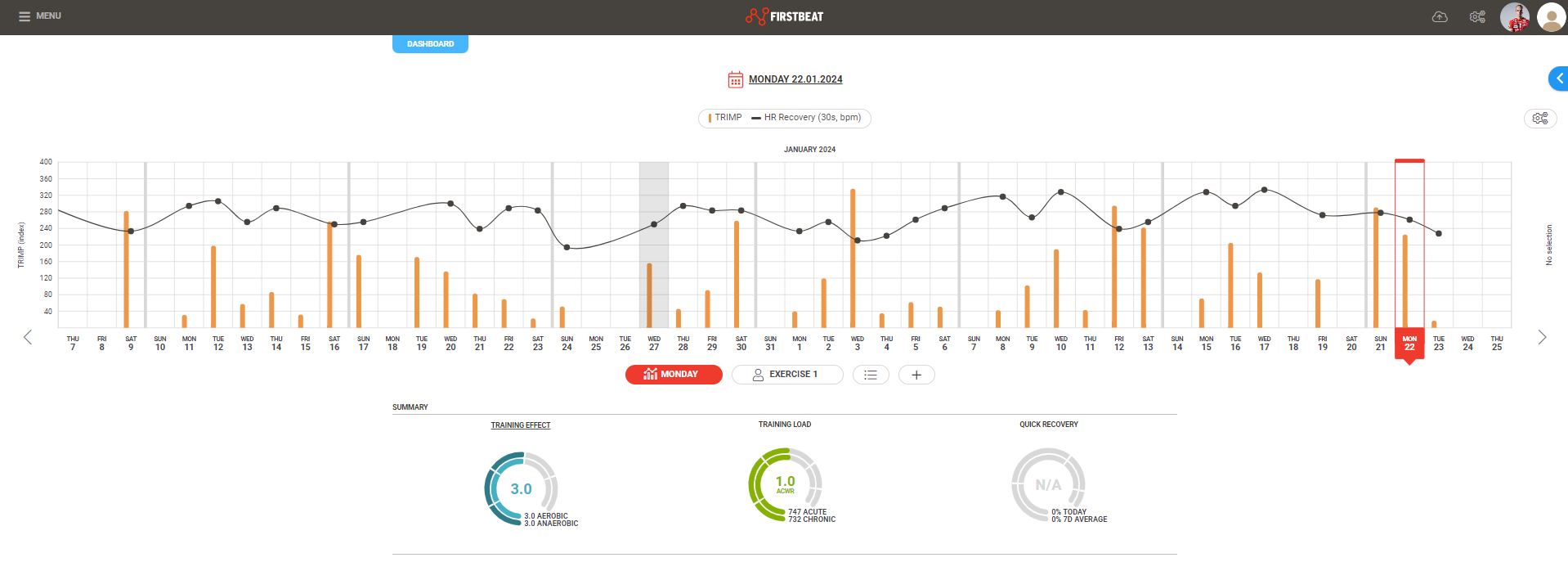
Heart Rate Recovery trend for the selected athlete.
How do other Firstbeat clients use the HRR feature?
Rich Campbell is Head Athletic Trainer and Strength & Conditioning Coach at Portland Winterhawks, one of the most successful junior teams in terms of producing National Hockey League (NHL) alumni. Rich uses Firstbeat’s Heart Rate Recovery feature to get a quick insight into a player’s ability to recover. Rich says:
“The Portland Winterhawks Hockey team has added the Heart Rate Recovery metric to our arsenal. I have found that this metric reinforces visual assessment of conditioning. In addition, tracking this metric over time can help with identifying the trajectory of individual players conditioning.
I like to lap certain drills, as well as specific conditioning drills that allow for appropriate recovery, for example, 40s sprints at 4:1 work rest.
I use the recovery metrics of 30s, 60s, and 120s (for the fourth metric I like the %HRMax metric. I use this as an effort meter or fatigue meter for the drill). I let the coach know that our recovery interval needs to be at least 120s in order to capture the 120s metric.
The 30s metric gives us a quick gauge of their ability to recover. This metric tells us a lot about their ability to recover, in so much as the 30s recovery predicts the next two recovery metrics. The 120s interval quickly highlights those in most need of further intervention into recovery strategies.”
Heart Rate Recovery is available to all Premium+ customers or as an upgrade module for everyone else. Existing customers can contact your account manager or submit the contact form.
References
Bellenger, C.R., Fuller, J.T., Thomson, R.L., Davison, K., Robertson, E.Y., & Buckley, J.D. (2016). Monitoring Athletic Training Status Through Autonomic Heart Rate Regulation: A Systematic Review and Meta-Analysis. Sports Med, 46, 1461–1486.
Malone, S., Hughes, B., Roe, M., Collins, K., & Buchheit, M. (2017). Monitoring Player Fitness, Fatigue Status and Running Performance During an In-Season Training Camp in Elite Gaelic Football. Science and Medicine in Football, 1, 1-8.
Rabbani, A., Kargarfard, M., & Twist, C. (2018). Reliability and Validity of a Submaximal Warm-up Test for Monitoring Training Status in Professional Soccer Players. Journal of Strength and Conditioning Research, 32 (2), 326-333.
Scott, T., McLaren, S., Lovell, R., & Scott, M., & Barrett, S. (2022). The Reliability, Validity and Sensitivity of an Individualised Sub-Maximal Fitness Test in Elite Rugby League Athletes. Journal of Sports Sciences, 40, 1-13.
Shushan, T., Lovell, R., McLaren, S. J., Buchheit, M., Scott, T. J., & Barrett, S. (2022). Submaximal Fitness Tests in Team Sports: A Theoretical Framework for Evaluating Physiological State. https://doi.org/10.31219/osf.io/ry3pu
Veugelers, K., Naughton, G., Duncan, C., Burgess, D., & Graham, Stuart. (2016). Validity and Reliability of a Submaximal Intermittent Running Test in Elite Australian Football Players. Journal of Strength and Conditioning Research, 30.
You might also be interested in
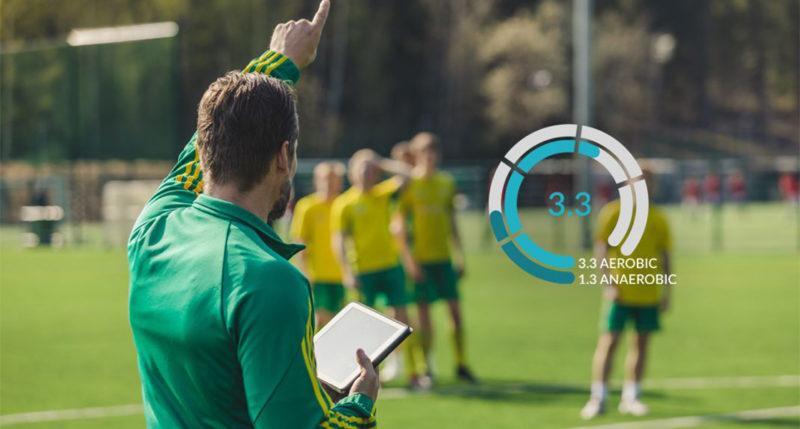
How to Use Training Effect: The Firstbeat Sports Feature that Measures the Impact of Training
In this article, we look at how Training Effect is calculated, the Training Effect scale, and how it is visualized in Firstbeat Sports.
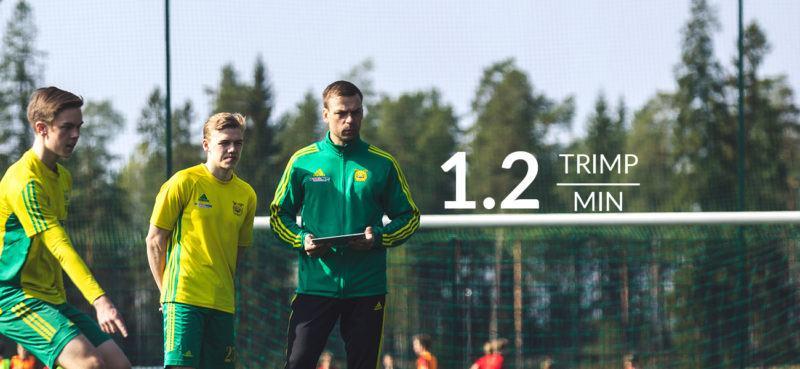
Real-time TRIMP/min: How to Use the Firstbeat Sports App Feature in Training
From replicating game intensity to aiding player rehab, monitoring TRIMP/min has wide-ranging benefits.
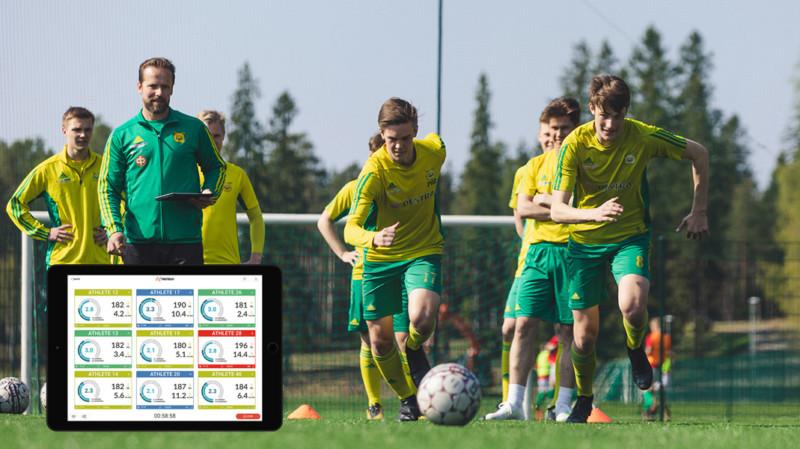
Movement Load: Add Valuable Context to Internal Load Data
Movement Load metric allows you to quantify the movement of your athletes using the Firstbeat Sports platform. But what exactly is Movement Load? What should you do with information it…


